Did you know that over 70% of orthopedic practices now utilize in-office orthopedic imaging to speed up diagnosis and improve patient outcomes? This breakthrough approach not only reduces waiting times but also offers cost-effective, accurate evaluations right where patients receive care. In this article, we explore how modern orthopedic clinics implement X-ray, ultrasound, MRI, and other imaging modalities onsite to revolutionize diagnosis, treatment planning, and patient convenience.
What You'll Learn
- The essential role and types of in-office orthopedic imaging in today's practices
- Key benefits for both patients and providers through faster diagnosis and reduced referrals
- How imaging supports conservative care and minimally invasive treatments
- Expert recommendations and comparisons of common orthopedic imaging tests
- Answers to frequently asked questions about orthopedic imaging and exams
Startling Facts About In-Office Orthopedic Imaging
- Over 70% of orthopedic practices now utilize in-office orthopedic imaging to accelerate diagnosis.
- Patients save an average of 30% in time and costs when imaging is performed onsite.
- In-office orthopedic imaging reduces the need for multiple appointments and referrals.

Image description: A bright modern waiting room in an orthopedic clinic where diverse patients engage with friendly staff. Posters of bone anatomy and imaging equipment are visible in the background, with natural daylight illuminating the space. This environment promotes comfort as patients prepare for in-office orthopedic imaging consultations.
Overview of In-Office Orthopedic Imaging and Its Role in Modern Orthopedic Practice
- In-office orthopedic imaging encompasses diagnostic tests performed within the orthopedic clinic, including X-ray, ultrasound, and MRI services.
- These imaging tests dramatically improve diagnostic accuracy, enabling tailored treatment plans that enhance patient outcomes.
- The seamless integration of imaging equipment within practice workflows accelerates care delivery and reduces patient frustration.
“Providing in-office XR and ultrasound allows us to quickly evaluate conditions, which is crucial for timely and effective treatment,” explains Dr. Timothy Larson of Denton Hand & Orthopedics.
Common Imaging Tests Used in Orthopedic Practices
- X-ray imaging primarily detects bone fractures and assesses joint alignment efficiently.
- Ultrasound offers detailed soft tissue evaluation and facilitates guided injections, improving precision.
- Magnetic Resonance Imaging (MRI) provides high-resolution images of soft tissues, ligaments, and cartilage crucial for complex diagnoses.
- Computed Tomography (CT) scans deliver detailed three-dimensional views of complex bone and joint structures.
Benefits of In-Office Orthopedic Imaging for Patients and Providers
- Rapid diagnosis and streamlined treatment planning reduce patient anxiety and improve clinical outcomes.
- Less reliance on external referrals prevents appointment delays and fragmented care.
- In-office minor procedures paired with imaging lower costs due to contracted insurance agreements.
- Patients enjoy enhanced comfort and convenience from having imaging done onsite in a familiar setting.
Dr. Timothy Larson emphasizes, “Our ability to perform imaging and minor procedures in-office saves patients significant time and money, while ensuring compassionate, individualized care.”
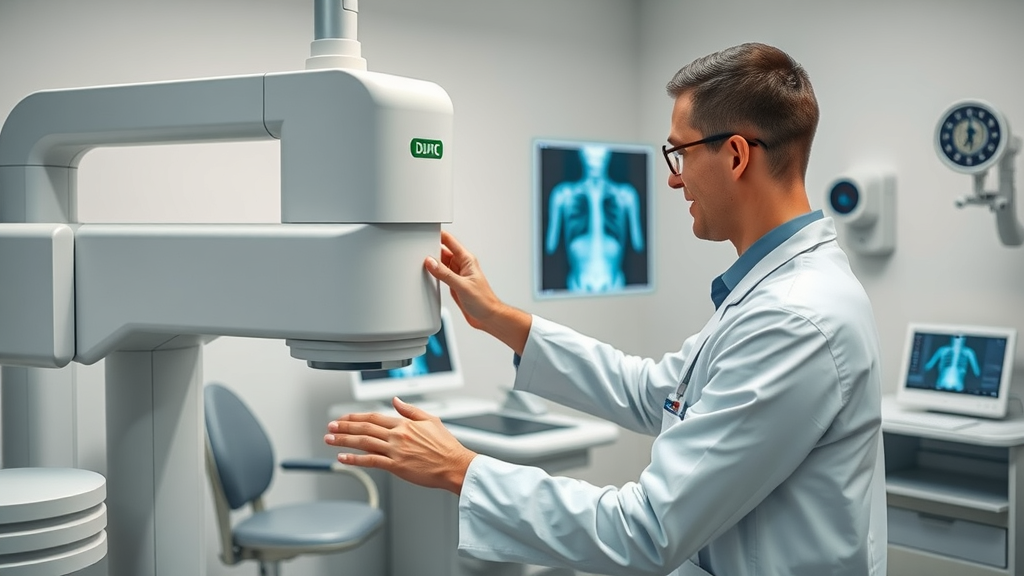
Image description: A skilled technician operates an advanced in-office orthopedic imaging X-ray machine in a pristine clinical environment. The natural lighting highlights the state-of-the-art equipment that supports rapid diagnosis and treatment by orthopedic specialists.
How In-Office Imaging Tests Support Conservative and Minimally Invasive Treatments
- In-office imaging guides physicians in prioritizing conservative treatment options, ensuring patients receive least invasive care first.
- Imaging confirms correct application of casts, braces, and orthopedic devices, guaranteeing efficacy and patient safety.
- Minimally invasive procedures are facilitated at nearby surgical centers with imaging support, improving recovery and outcomes.
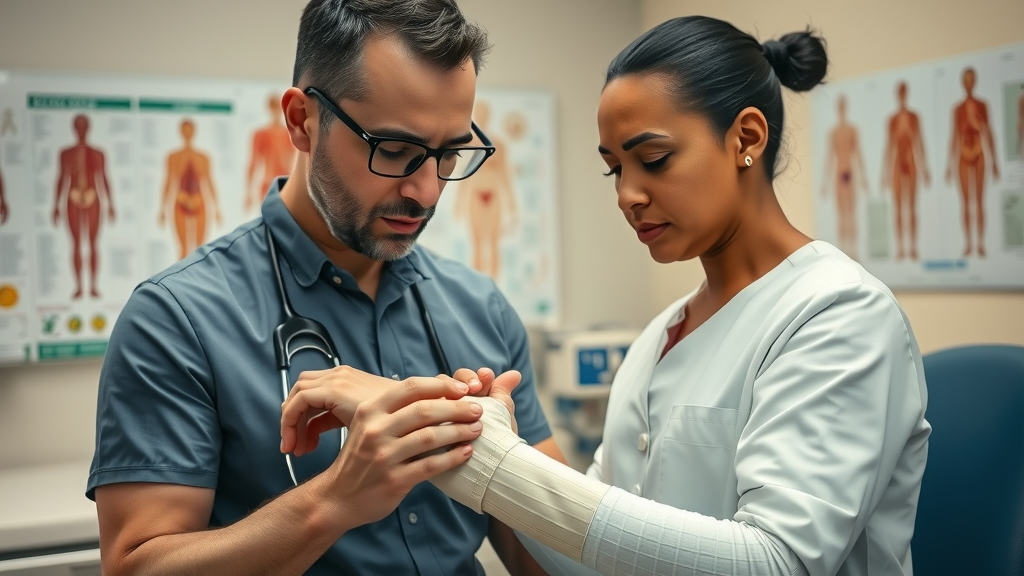
Image description: An orthopedic specialist gently applies a cast to a patient’s arm, utilizing insights provided by in-office orthopedic imaging . The calm, attentive environment enables precise and compassionate care, helping patients recover effectively.
Expert Recommendations for Utilizing In-Office Imaging
- Prioritize conservative treatments whenever possible, using in-office orthopedic imaging to support decision-making.
- Leverage in-office imaging to expedite acute care cases and provide timely follow-up assessments.
- Integrate hand therapy with continuous imaging to ensure comprehensive patient management and rehabilitation success.
Comparison of Imaging Modalities: MRI Services, Computed Tomography, and X-Ray Imaging Tests
| Imaging Test | Best For | Advantages | Limitations |
|---|---|---|---|
| X-ray | Bone fractures, joint alignment | Quick, cost-effective, widely available | Limited soft tissue detail |
| MRI Service | Soft tissue injuries, ligaments, cartilage | High-resolution soft tissue imaging | Longer scan times, higher cost |
| Computed Tomography | Complex bone structures, 3D imaging | Detailed bone visualization | Radiation exposure, less soft tissue detail |
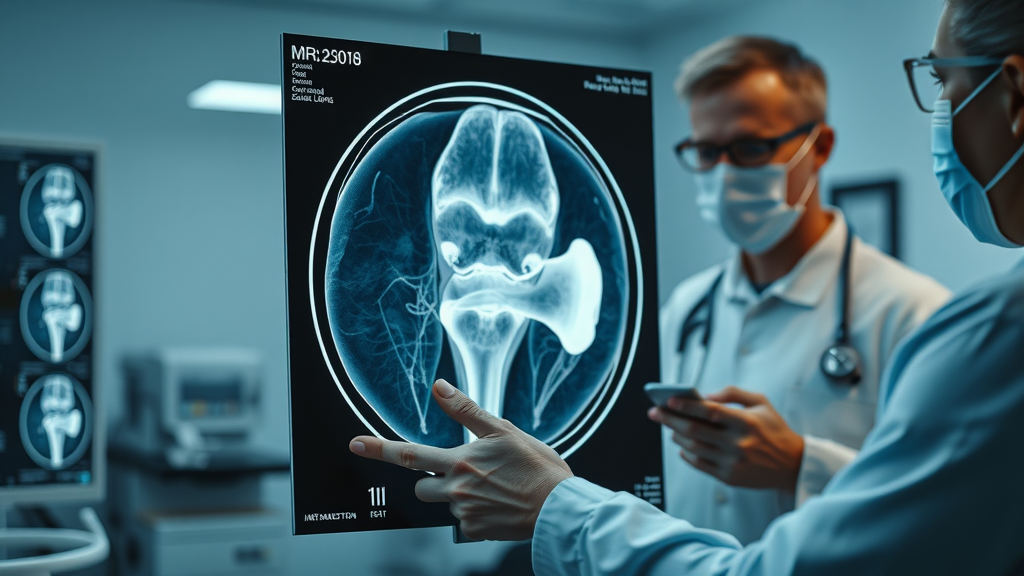
Image description: A detailed MRI scan of a knee joint is reviewed by an orthopedic specialist, illustrating the depth of information obtained through advanced in-office orthopedic imaging technology. The cool tones and soft lighting emphasize the clinical precision of the process.
Addressing Common Questions About Orthopedic Imaging and Exams
- What is the difference between a CT scan and an MRI in orthopedics?
- What happens during an orthopedic exam?
- What is an orthopedic office?
- What is the best scan for soft tissue injury?
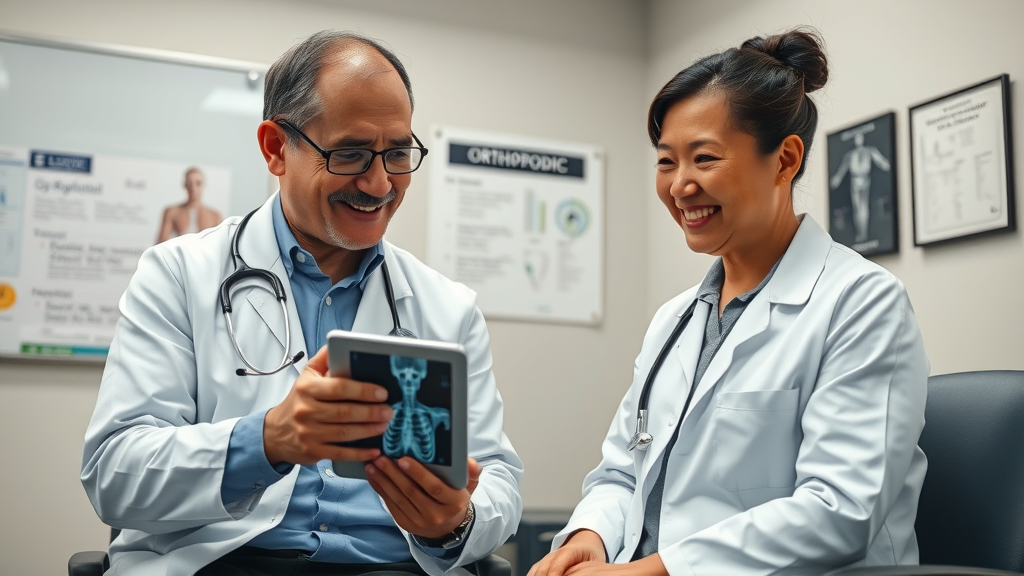
Image description: An orthopedic doctor reviews diagnostic images with a patient using a digital tablet, demonstrating transparency and patient-centered care enhanced by in-office orthopedic imaging .
FAQ: What is the difference between a CT scan and an MRI in orthopedics?
- CT scans provide detailed and rapid imaging of bone structures but involve exposure to radiation.
- MRI offers superior contrast of soft tissues such as ligaments and cartilage without radiation but requires longer scan times.
FAQ: What happens during an orthopedic exam?
- The exam typically includes physical assessment, review of patient history, and selective in-office imaging tests to clarify diagnosis and treatment needs.
FAQ: What is an orthopedic office?
- An orthopedic office is a specialized medical clinic that focuses on diagnosis, treatment, and rehabilitation of musculoskeletal conditions using both clinical expertise and advanced imaging tools.
FAQ: What is the best scan for soft tissue injury?
- MRI is generally considered the best imaging test for soft tissue injuries due to its exceptional detail and contrast resolution.
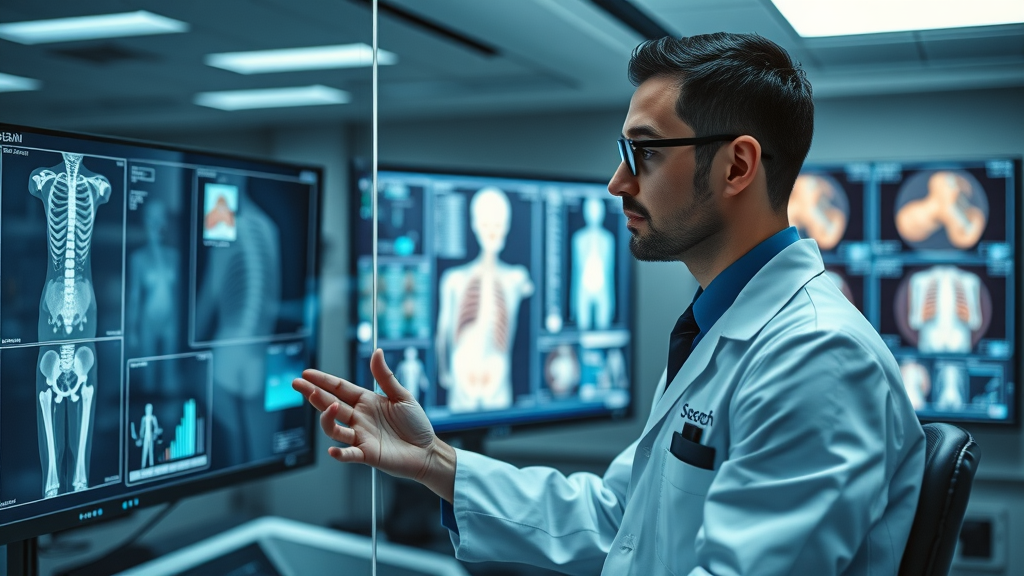
Image description: A technician focuses on real-time displays of 3D bone and soft tissue images within a state-of-the-art orthopedic imaging control room, illustrating the precision and sophistication of modern in-office orthopedic imaging services.
Key Takeaways on In-Office Orthopedic Imaging
- In-office orthopedic imaging accelerates diagnosis and facilitates timely treatment.
- It supports conservative care approaches and enables minimally invasive interventions.
- Patients benefit from reduced costs, lower appointment burdens, and enhanced convenience.
- Expert utilization of imaging enhances overall quality and responsiveness of orthopedic care.
Conclusion: The Future of Orthopedic Practice with In-Office Imaging
Dr. Timothy Larson concludes, “ In-office orthopedic imaging is transforming patient care by combining speed, accuracy, and compassion, making it an indispensable tool in modern orthopedic practice.”
Ready to Feel Better? Schedule Your Consultation Today.
- Visit www.dentonhand.com to book your appointment.
- Experience the benefits of advanced in-office orthopedic imaging and personalized care from the experts at Denton Hand & Orthopedics.
 Add Row
Add Row  Add
Add 



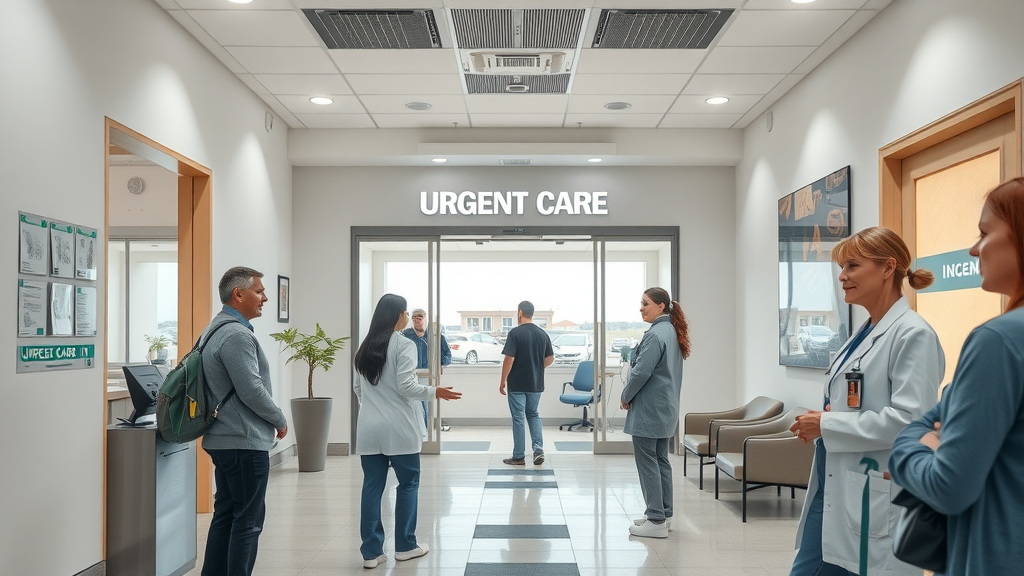
Write A Comment